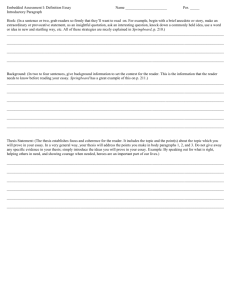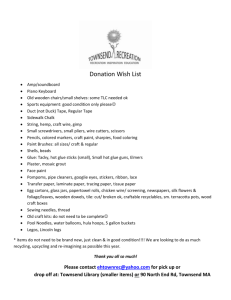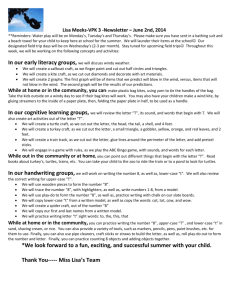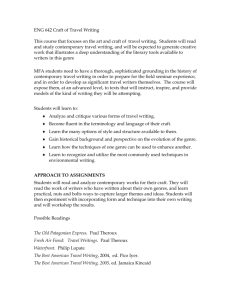Craft of Fiction Critical Essay Prompt
advertisement
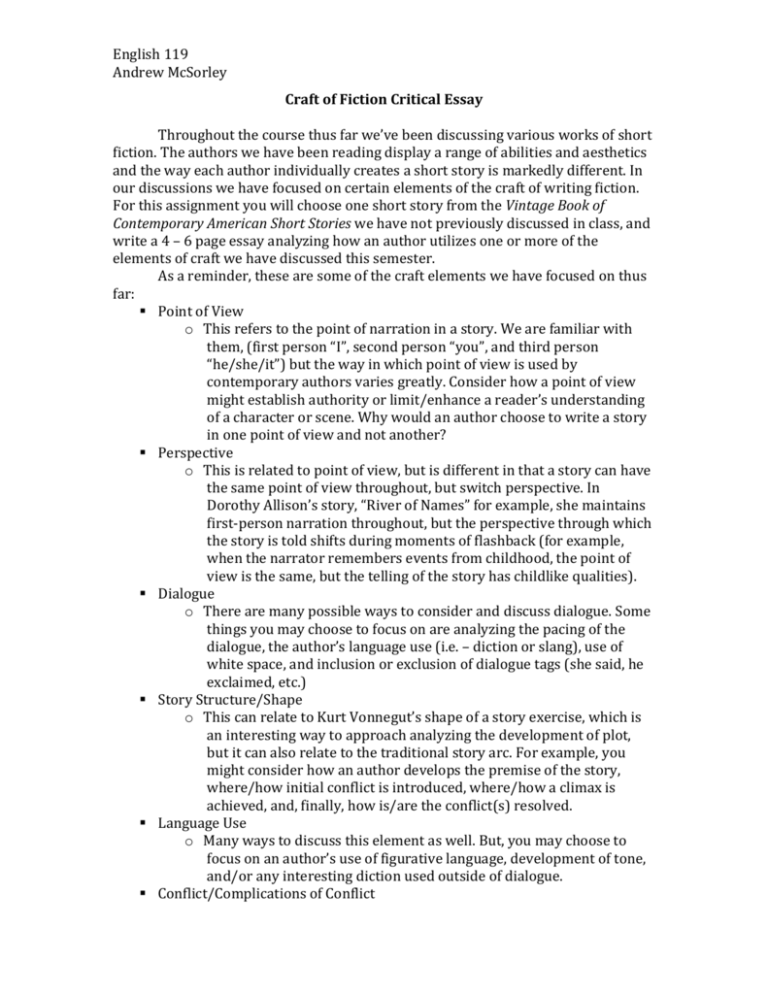
English 119 Andrew McSorley Craft of Fiction Critical Essay Throughout the course thus far we’ve been discussing various works of short fiction. The authors we have been reading display a range of abilities and aesthetics and the way each author individually creates a short story is markedly different. In our discussions we have focused on certain elements of the craft of writing fiction. For this assignment you will choose one short story from the Vintage Book of Contemporary American Short Stories we have not previously discussed in class, and write a 4 – 6 page essay analyzing how an author utilizes one or more of the elements of craft we have discussed this semester. As a reminder, these are some of the craft elements we have focused on thus far: Point of View o This refers to the point of narration in a story. We are familiar with them, (first person “I”, second person “you”, and third person “he/she/it”) but the way in which point of view is used by contemporary authors varies greatly. Consider how a point of view might establish authority or limit/enhance a reader’s understanding of a character or scene. Why would an author choose to write a story in one point of view and not another? Perspective o This is related to point of view, but is different in that a story can have the same point of view throughout, but switch perspective. In Dorothy Allison’s story, “River of Names” for example, she maintains first-person narration throughout, but the perspective through which the story is told shifts during moments of flashback (for example, when the narrator remembers events from childhood, the point of view is the same, but the telling of the story has childlike qualities). Dialogue o There are many possible ways to consider and discuss dialogue. Some things you may choose to focus on are analyzing the pacing of the dialogue, the author’s language use (i.e. – diction or slang), use of white space, and inclusion or exclusion of dialogue tags (she said, he exclaimed, etc.) Story Structure/Shape o This can relate to Kurt Vonnegut’s shape of a story exercise, which is an interesting way to approach analyzing the development of plot, but it can also relate to the traditional story arc. For example, you might consider how an author develops the premise of the story, where/how initial conflict is introduced, where/how a climax is achieved, and, finally, how is/are the conflict(s) resolved. Language Use o Many ways to discuss this element as well. But, you may choose to focus on an author’s use of figurative language, development of tone, and/or any interesting diction used outside of dialogue. Conflict/Complications of Conflict English 119 Andrew McSorley o This is naturally connected to story structure, but can easily be considered and analyzed on its own. There are almost infinite ways an author can choose to establish, complicate, and then resolve conflict. For example, Andre Dubus, in the story, “The Fat Girl,” establishes conflict naturally, as conflict may arise through the course of a person’s life. The various major events in the main character’s life become the source of the story’s major conflicts. In contrast, Clare Beams’ story, “We Show What We Have Learned” creates an inorganic conflict, a conflict entirely fictional in nature in which a teacher slowly loses her body parts in front of her students. You may also choose to discuss an element of fictional craft we did not explicitly discuss at length in class, such as: - - Use of place/setting Character Development o i.e. – static vs. round characters, use of epiphany, unexpected action, and/or quirks, habits, or flaws that make a character seem real Movement of narrative (through time or place) Construction/Shift in Voice or Narration Use of memory/flashback Any of these would be useful to analyze and discuss in this paper. There may be other elements of a story you find would be interesting to write about, and I encourage you to write about any element of craft you believe is worthy of further discussion. The important part of this assignment is that you do not simply summarize the events of the story, but actually engage and analyze how that story was crafted. In short, this is not a book report. Your essay should contain an arguable thesis such as: “Stephanie Vaughn’s story ‘Dog Heaven’ contains multiple shifts in location, and, upon closer reading, it is clear that these shifts are purposeful and meant to disorient the reader. This disorientation enhances the reader’s ability to empathize with a character that has no real grounding and, further, allows the reader to accept the narrator as honest and true.” Two things occur in this thesis: first, a story and specific element of craft are named, and a purpose for the author’s use of that element of craft is clearly stated. Second, the use of that element is evaluated as to whether or not it affects the reader’s engagement with the story positively or negatively. Evidence from the story itself can then be clearly shown as support for this thesis. Important Dates September 27th – Short Story/Topic for paper should be chosen by this date. A working thesis for the paper will be submitted in class on this day, as well. October 23rd – Papers are due in class on this date (hard copies only).

